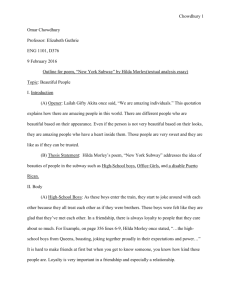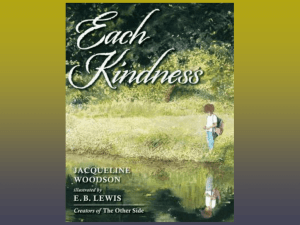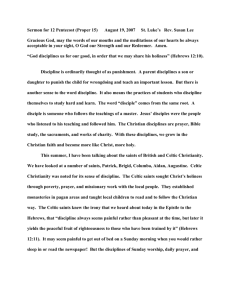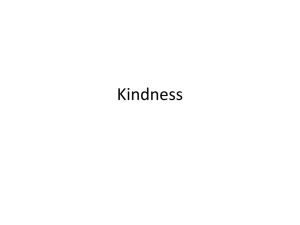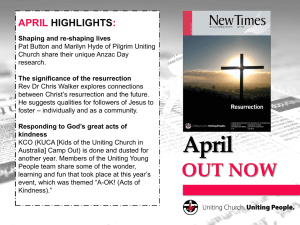Textual Analysis of a Poem essay – Draft #2
advertisement
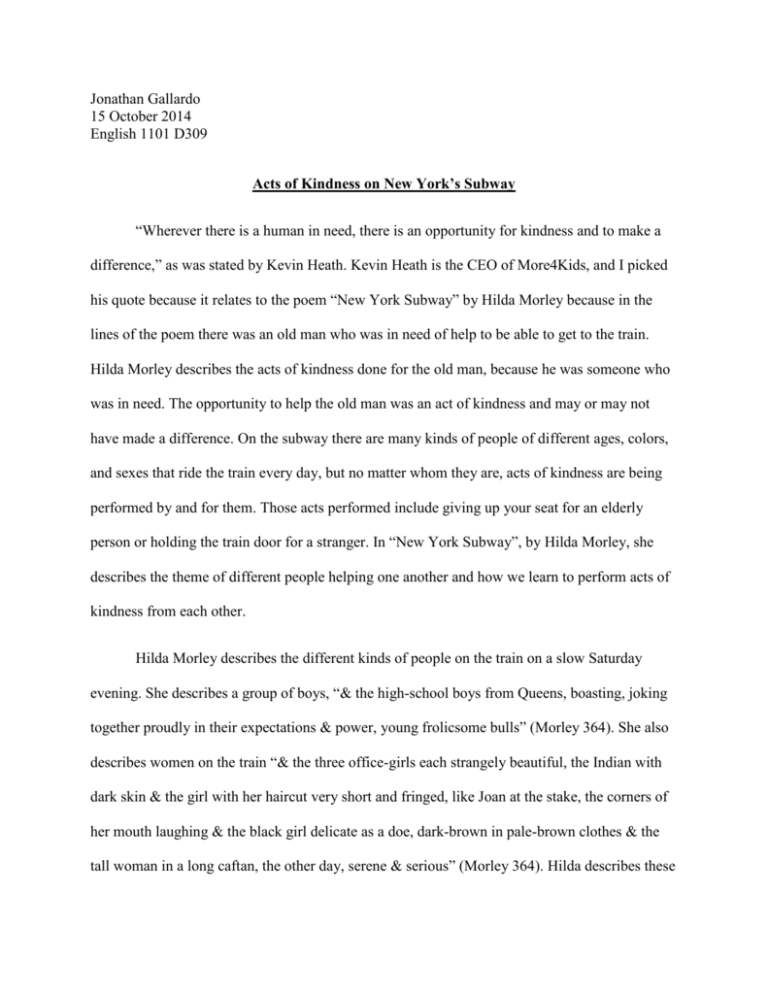
Jonathan Gallardo 15 October 2014 English 1101 D309 Acts of Kindness on New York’s Subway “Wherever there is a human in need, there is an opportunity for kindness and to make a difference,” as was stated by Kevin Heath. Kevin Heath is the CEO of More4Kids, and I picked his quote because it relates to the poem “New York Subway” by Hilda Morley because in the lines of the poem there was an old man who was in need of help to be able to get to the train. Hilda Morley describes the acts of kindness done for the old man, because he was someone who was in need. The opportunity to help the old man was an act of kindness and may or may not have made a difference. On the subway there are many kinds of people of different ages, colors, and sexes that ride the train every day, but no matter whom they are, acts of kindness are being performed by and for them. Those acts performed include giving up your seat for an elderly person or holding the train door for a stranger. In “New York Subway”, by Hilda Morley, she describes the theme of different people helping one another and how we learn to perform acts of kindness from each other. Hilda Morley describes the different kinds of people on the train on a slow Saturday evening. She describes a group of boys, “& the high-school boys from Queens, boasting, joking together proudly in their expectations & power, young frolicsome bulls” (Morley 364). She also describes women on the train “& the three office-girls each strangely beautiful, the Indian with dark skin & the girl with her haircut very short and fringed, like Joan at the stake, the corners of her mouth laughing & the black girl delicate as a doe, dark-brown in pale-brown clothes & the tall woman in a long caftan, the other day, serene & serious” (Morley 364). Hilda describes these groups of different people because she mentions in her poem that we only learn how to perform acts of kindness from one another. When she mentioned that, this connects to the different people on the train by showing how those different people may have seen what Hilda had did when she helped an old man get into the train. Even today, when we see acts of kindness being performed, we learn from that and we try it out. We do it because it is in our nature and sometimes we do it just for the good feeling of helping someone out. Hilda describes the different people on the subway train because it connects to the idea of learning how to perform acts of kindness from one another. Hilda also describes how people help one another. It is by our nature to help one another because as humans we aren’t perfect and we need someone else’s help to get through difficulties in life. For example, Hilda shows in this quote how people help one another “the Puerto Rican holding the door for more than 3 minutes for the feeble, crippled, hunched little man who could not raise his head, whose hand I held, to help him into the subway-car” (Morley 364). She describes how she helped the old man by holding his hand to get into the subway car, and how the Puerto Rican man holds the door for them so they can get into the subway car. Hilda clearly describes how people can help one another in the poem. Hilda describes how we learn to perform acts of kindness from each other. Hilda walked an old man into the cart of the train and she says “someone, seeing us, gives up his seat, learning from us what we had learned from each other” (Morley 364). Hilda Morley describes how whether we may know it or not, we learn how to perform acts of kindness from each other. If we see someone give up his or her seat for an elderly person, we learn from that and now when we see an elderly person step on the train, we ask if they would like to sit down and give him or her our seat. It doesn’t only happen for elderly people, but in general for other people as well. We should not only help elderly people, but we should always help each other no matter who we are. If you see someone struggling to stand in the train, or even a pregnant lady standing in the train, it would be a good deed to give up your seat for that person. Hilda Morley tries to tell her audience through her poem that we should make an effort to perform good deeds. The reason she tries to tell her audience this is because we only learn to perform good deeds from one another. Without one another, we wouldn’t really know how to perform good deeds. Hilda Morley leaves the audience at the end of her poem questioning whether or not people perform good deeds today.Hilda Morley clearly describes how people help one another in her poem. In the poem “New York Subway” by Hilda Morley, she describes the theme of different people helping one another and how we learn to perform acts of kindness from each other. Hilda describes the theme by showing how she was able to help an old man into the subway train and how strangers also helped by holding the door and giving up a seat for him. When Hilda also described the different people on the train, she described how they may have learned as they may have watched the acts of kindness be performed, thus learning from each other. When she described the group of girls and group of boys on the train, she is connecting the idea that those groups may have learned how to perform good deeds just by seeing Hilda walk an old man into the train and seeing someone give up their seat. As people, we perform acts of kindness because it is in our nature, but Hilda Morley emphasizes the acts of kindness because one person learns to act kind from another. New York’s Subway whether we may know it or not, is not only a place of transportation but it is a place where people can meet, and even learn from each other. We are all strangers to one another, but as strangers we can always come together and lend out a helping hand when someone is in need as Hilda Morley had described in her poem “New York Subway”.
